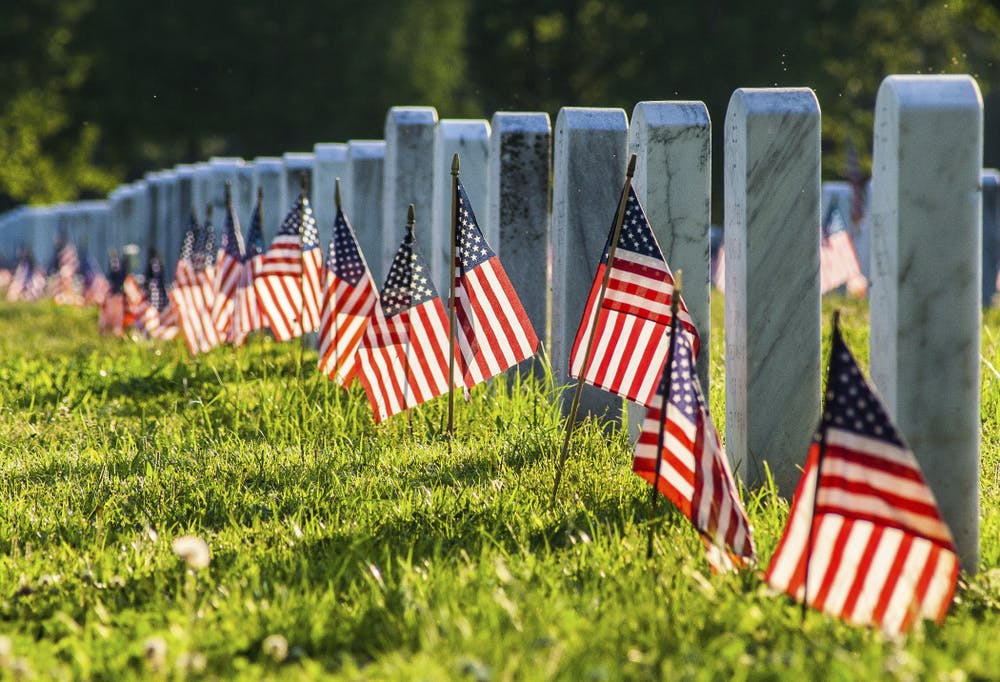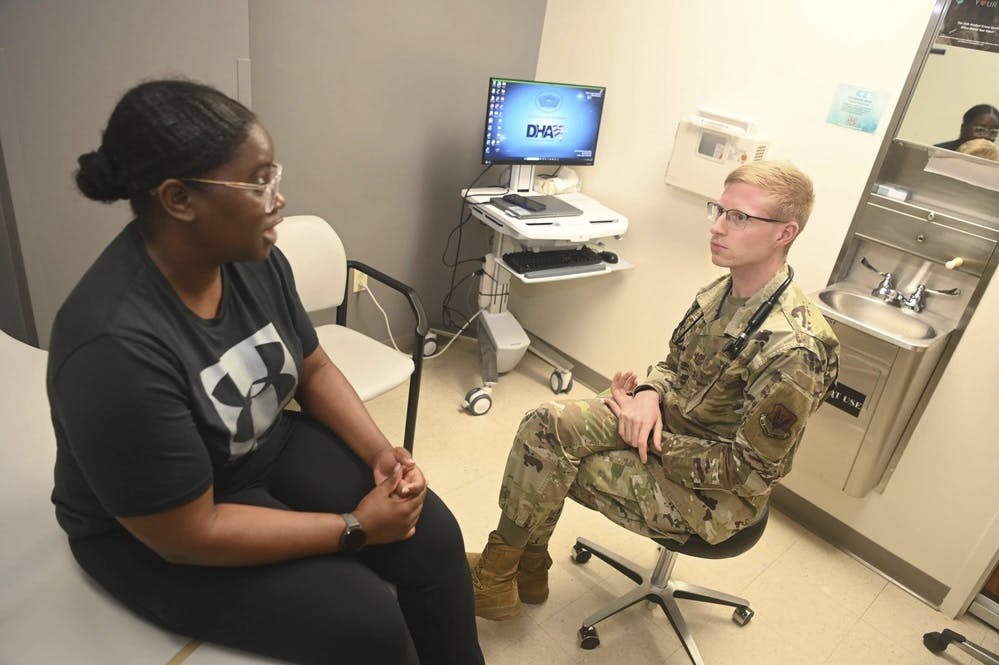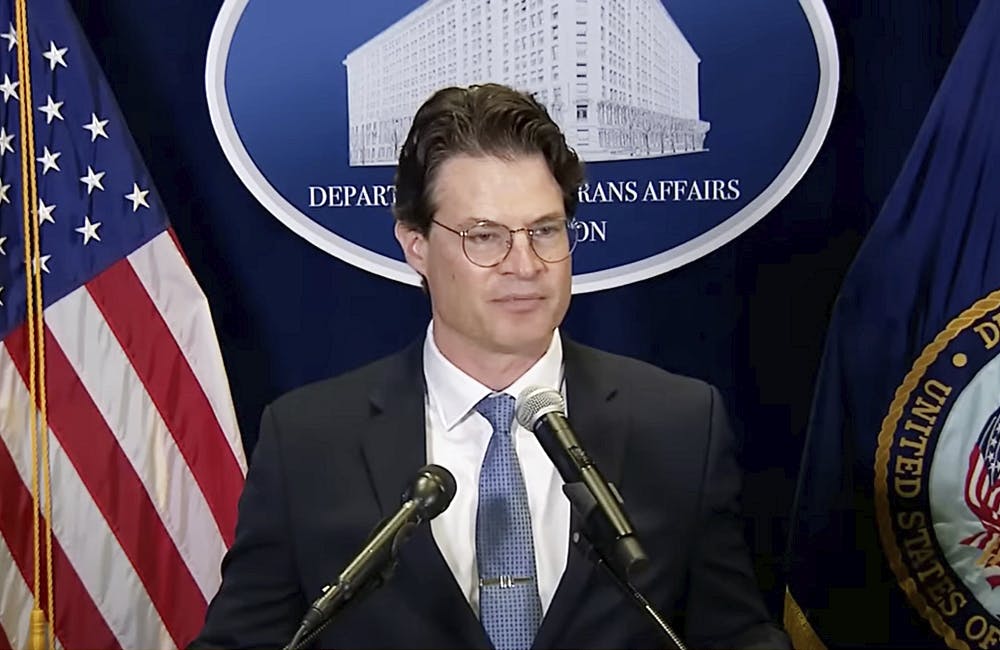Digital Memorial Adds Over 300,000 Veteran Records Using Army Data
The Veterans Legacy Memorial remembrance platform includes additional veteran profiles from DOD cemeteries ahead of Memorial Day.

The Department of Veterans Affairs Veterans Legacy Memorial (VLM) digital remembrance platform has added new veteran pages by connecting outside its network walls across 27 Defense Department cemeteries ahead of Memorial Day this year.
The bulk of the approximately 300,000 new records comes from Arlington National Cemetery, which is managed by the Army. To successfully add the new pages, National Cemetery Administration Digital Services Officer James LaPaglia said the agency went through a formal, deliberate three-month discovery period with the Army to inspect its data.
“We looked at their data to see how it compared to the data fields that we’d already been using in VLM to display on veteran pages. What fields might be different? Are they named differently? Did we have to structure tables differently on the backend? Then we all got together and said, ‘Okay, looks like we have a path forward,’” LaPaglia told GovCIO Media & Research in an interview.
Under the collaboration, VA connected with the Enterprise Interment Services System (EISS), an Army-managed database within DOD to record interments. LaPaglia noted the data within the system is 95% to 98% the same types of data and information VA has already displayed on VLM’s current 4.5 million veteran pages, so VA didn’t have to adjust its template much to accommodate the additional pages.
“This is a big leap forward for VLM. … For us, to be connecting to a database outside of the VA, is a first. It’s also something that our customers have been asking for from the beginning when VLM started in 2019. The fact that Arlington National Cemetery wasn’t part of VLM was a surprise for many people. Lots of people don’t know that the Army runs Arlington National Cemetery,” LaPaglia said. “This has been a long time coming, and that’s the scope of the expansion.”
Improving Search and Tech Processes For VLM
Over the past year, the agency has worked to improve its DevSecOps processes, implementing automatic pushes and releasing code to lower environments to bolster the site. The agency also redesigned and unified all the interactive modules to be designed in a similar fashion, standardizing and simplifying the process for any future changes.
To accommodate for the additional website traffic, the team also added more containers and implemented autoscaling to allow automatic deployments of additional containers if CPU or traffic increases to an amount that demands it.
Additionally, VA revamped its landing page basic search feature to return search results in less than five seconds — a direct improvement to the customer experience.
“The revamping of the basic search feature came directly from user feedback. We added fields, we separated a single name field into a first name and a last name field, we added a year of death field, we synced up a huge list of 200 to 300 cemeteries into state and territory categories,” LaPaglia said. “The front-end user experience for the basic search will be more user friendly. Then, the logic for how we return those results was completely revamped. It’ll be much easier for people to find their veterans.”
VA also fielded user feedback surveys to get valuable information on barriers with the site and how to use the site. LaPaglia’s team also partnered with the agency’s Veterans Experience Office (VEO) to conduct a formal discovery and user experience process to generate action items.
“It generated about 50 actionable items that we put into JIRA for the team to tackle, and we have already started chunking that up and achieving some of those,” LaPaglia added. “This basic search revamp was one of those larger user experience actionable items that came out. … My guess is that we’ve already gotten through a dozen of those 50 actionable items, and we’ve already tagged 10 of them for a future CX effort next year.”
Looking ahead, the VLM team plans to bring in more automated testing to streamline validation checks. The team recently started the discovery process for a database on headstones and markers and plans to bring those records to VLM in the future.
The program also eventually aims to bring in records from private cemeteries and ones managed by independent agencies — including many of the ones residing abroad for World War I and II and the Korean War, for example.
“It’s a huge chunk. We’re talking about more than 5 million additional records. So that will double us in size. That’s a huge undertaking that we’re pushing toward,” LaPaglia said. “We hope to partner with the American Battle Monuments Commission to bring in those cemeteries. Those are mostly overseas. … We have a lot more expanding to do. Our goal all along is to create a page for every veteran no matter where their resting place.”
Find a veteran today at www.va.gov/remember to contribute to their digital legacies.
This is a carousel with manually rotating slides. Use Next and Previous buttons to navigate or jump to a slide with the slide dots
-

DOI Must Modernize Energy to Win AI Race, Secretary Says
Doug Burgum links AI innovation to energy reform as DOI advances digital infrastructure and wildfire response under Trump’s tech agenda.
2m read -

FEHRM CTO Targets Two-Year Cloud Migration for Federal EHR
Lance Scott touts new EHR tech advancements, including cloud migration, expanded data exchange and AI integration to improve care delivery.
4m read -

How Integrated Analytics Can Break Federal Data Silos
The Coleridge Initiative is leading the charge to modernize government data management, breaking down bureaucratic barriers by providing secure data access, advanced analytics and cross-agency collaboration tools.
11m watch -

AI Boosts Customer Experience at Federal Contact Centers
Federal contact center leaders at DOL and VA are exploring AI's potential to drive efficiency and boost customer experience.
3m read -

Treasury Tackles Digital Payment Modernization
Executive order pushes shift from paper to digital payments as Treasury targets waste, fraud and inefficiency across federal agencies.
3m read -

OPM Navigates AI Governance Through People
OPM's Taka Ariga explores AI's role in an efficient federal workforce and operations, focusing on trust, data integrity and storytelling.
19m listen -

Mission Daybreak Tech Aims to Reduce Veteran Suicides
The VA’s Mission Daybreak grant program has developed innovative technologies to help VA providers reduce veteran suicides.
4m read -

Proposed DOGE Reforms Target Technology, Efficiency
The proposed Department of Government Efficiency eyes technology and strategic investments to make government more effective.
6m read -

New Year, New Administration: What's Next for VA in 2025
VA sets its sights on modernizing its EHR, advancing interoperability and adopting emerging tech amid the presidential transition.
4m read -

Library of Congress, NARA Modernize Records Management with Emerging Tech
Natalie Buda Smith and Jill Reilly dive into the challenges of preserving and providing access to digital-native materials.
19m listen -

VA Focuses on Continuous Improvement for 2026 EHR Rollout
VA plans to resume rollout of its EHR in FY 25, focusing recent feedback to drive continuous improvement amid the presidential transition.
4m read -

Trump's VA Secretary Nominee Aims to 'Streamline' Operations
Former Rep. Doug Collins said he wants to "streamline" VA operations. If confirmed, he'd inherit VA's massive digital transformation efforts.
4m read
















